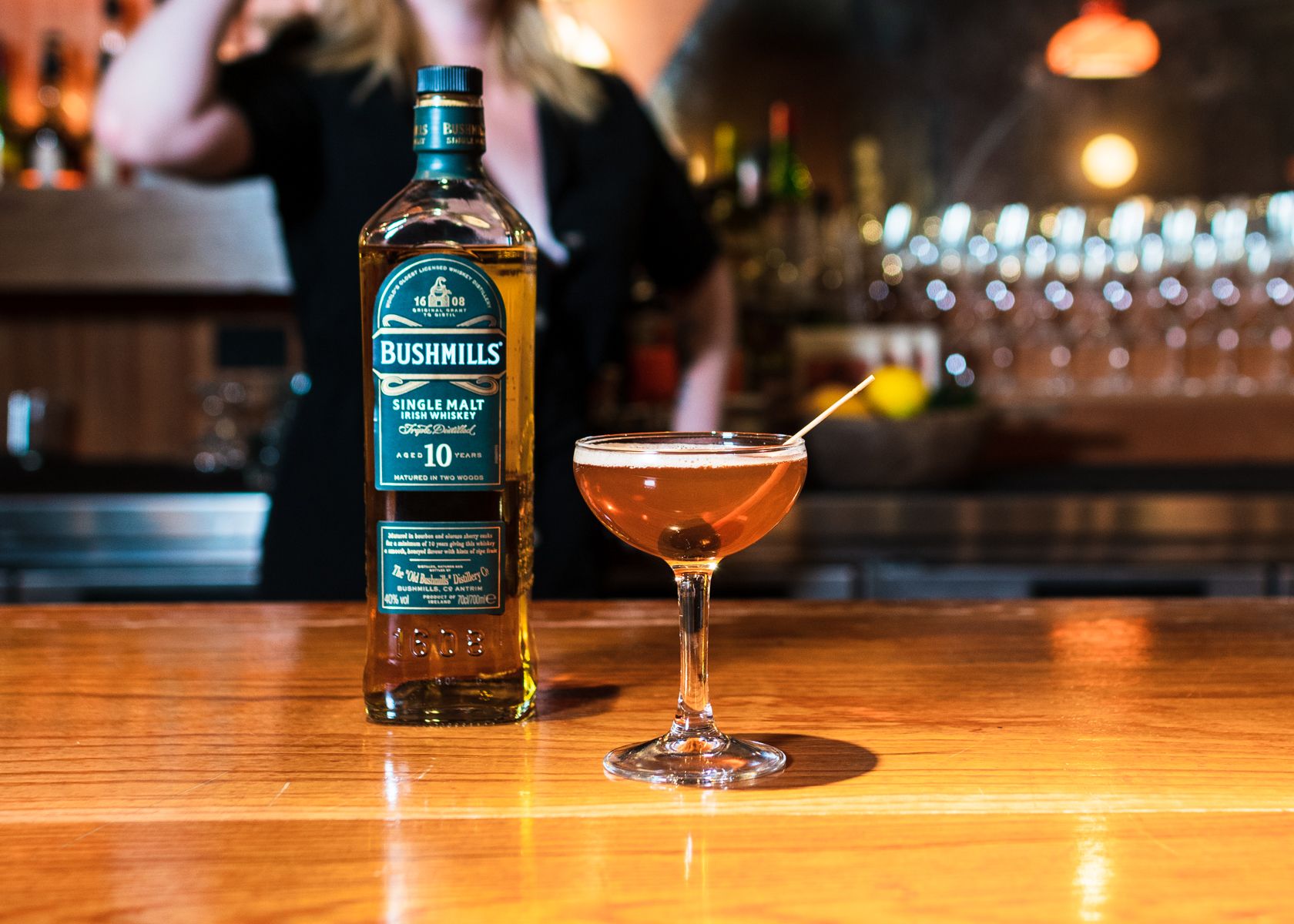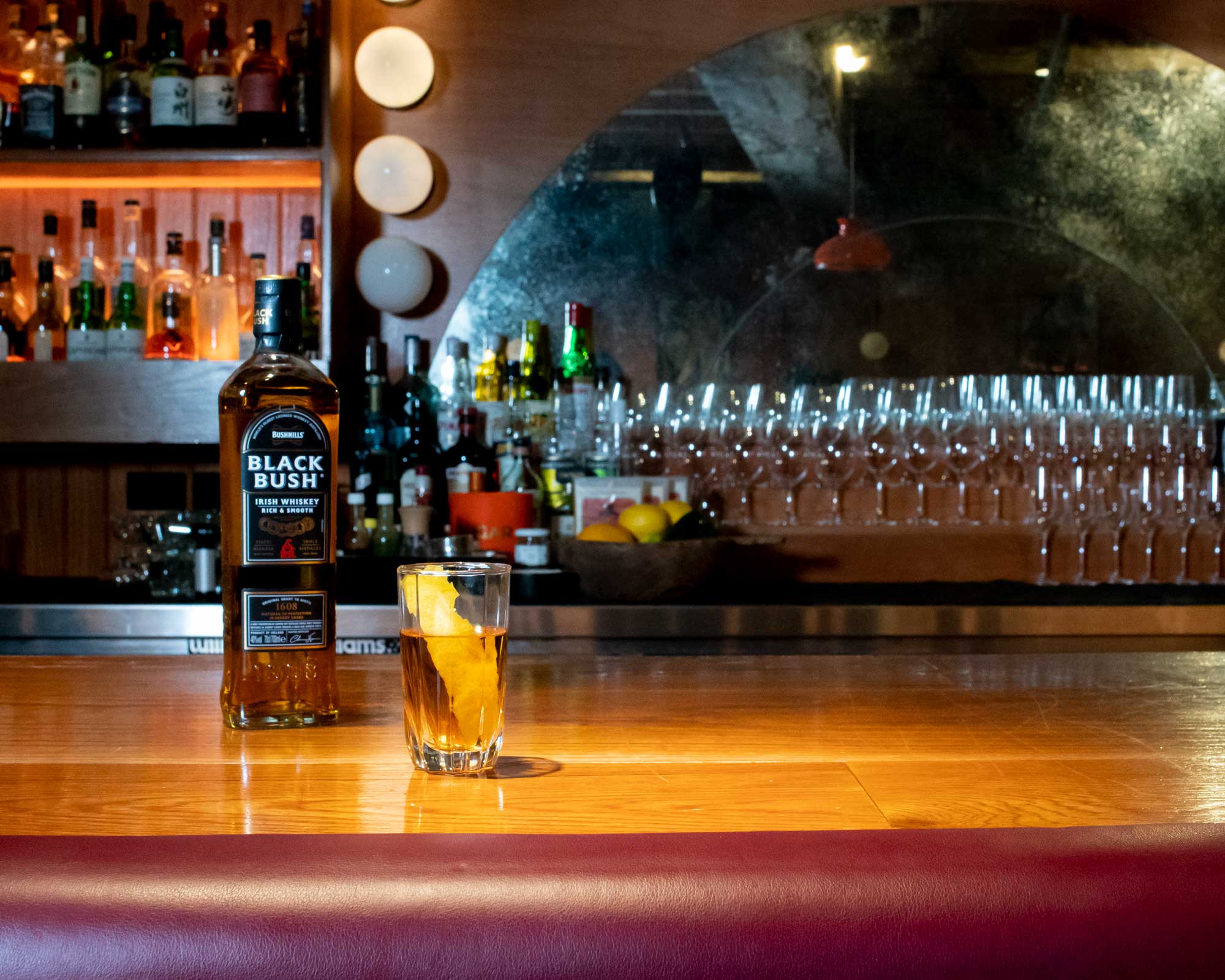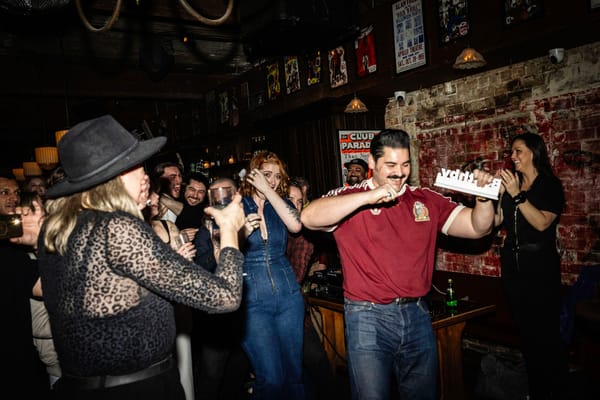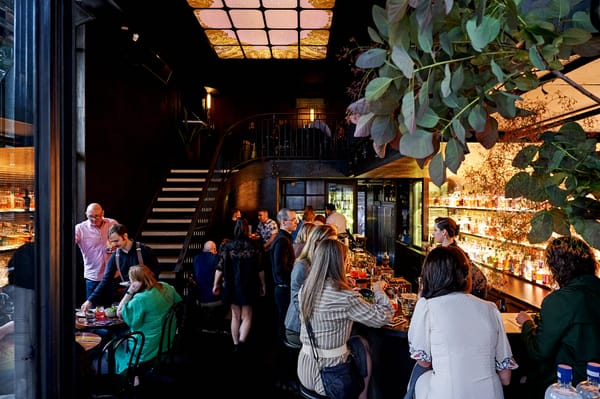The story behind stirring cocktails (and a Whiskey Stinger recipe)
It hasn't always been clear as to when you should stir a cocktail, and when you should shake it.
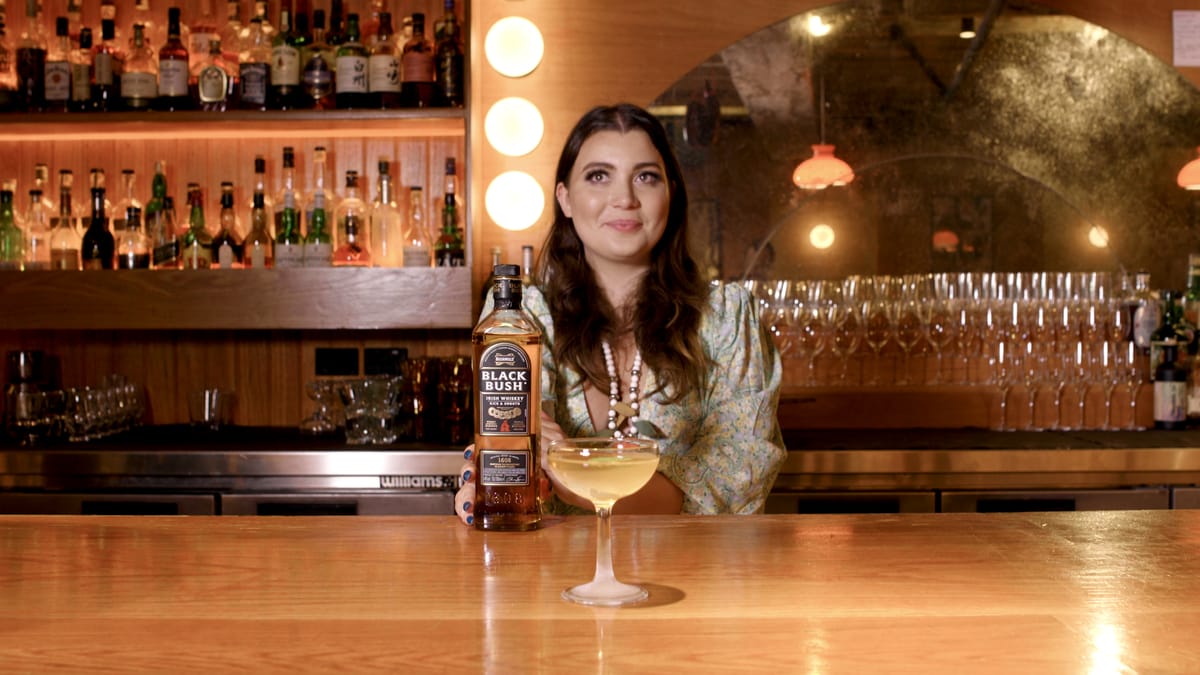
The drinks world is awash in rules for drinking; some of them are useful, most of them are malarkey.
And it can be hard to sort the ridiculous from the right. Take, for example, one reason why you might be told to stir a gin Martini: shaking it will bruise the gin, the thinking goes, so you best stir that drink.
Because you know how no one likes the taste of bruised gin, right? And sure, bruised gin doesn’t sound delicious — but what does that actually taste like? Purple? Black and blue?
If you think that sounds ridiculous, you’re right. Shaking the cocktail might dilute the drink, and thus dilute the flavours of said gin, but bruised gin? Give me a break.
These days, most bartenders follow a simple rule when deciding when to shake and when to stir a cocktail: if it’s all liquor, give it a stir; if the drink contains juice as well, give it a shake.
There are, of course, exceptions to this rule: some cocktails, which contain aromatised wines in their recipe, benefit from a throw (which you can see demonstrated here). And if you want to shake a Vodka Martini to well below freezing point, well, you pays your money and you takes your choice — just be sure not to throw your shoulder out.
There are, however, solid reasons why some drinks are better stirred, and some best shaken — and it’s something that bartenders have known to do for a long time (but have often forgotten).
It’s like their master distiller, Colum Egan, says: “We’re not good because we’re old, we’re old because we’re good.”
It began a little haphazardly, however. In Jerry Thomas’ 18662 cocktail manual, the Bar Tender’s Guide, he specified stirring for cocktails like the Brandy Cocktail and Japanese Cocktail; in others, like the Gin Cocktail — whose ingredients are the same as the Brandy Cocktail but for the brandy being replaced by gin — he specified they be shaken. He also would shake many of the drinks that contained juices (like many of his single serve Punches).
And a couple of decades later Harry Johnson, in his 1888 Bartenders Manual, saw no problem with stirring a Brandy Crusta despite its inclusion of lemon juice. When it comes to the Knickerbocker (raspberry syrup, lemon juice, slice of pineapple, slice of orange, St Croix rum, and curacao) he didn’t care if it was shaken or stirred. But unlike Thomas, he specified that the Gin Cocktail did need a healthy stir. So far, so confused.
In 1895’s The Mixicologist, however, its author C.F. Lawlor was pretty clear on when to stir and when to shake: the Manhattan and the Martinez — indeed, all the cocktails without juice or mixers — are stirred, while drinks like the Rum Sour (rum, sugar, lemon juice) and the Brandy Crusta are shaken with ice.
(He’s also one of the better writers among cocktail book authors — witness the ambitious opening line: “This is an age of progress.” How wonderful?)
In Cocktail Bill Boothby’s later book, the 1934 edition of World Drinks and How To Mix Them, that delineation is getting a little lost again: his eight variations on the Manhattan are all stirred, but then the Hanky Panky recipe — which may have been cribbed from The Savoy Cocktail Book from 1930, though perhaps not by Boothby himself (he died the same year) — is supposed to be shaken, despite being all liquor and no juice.
Indeed, in The Savoy Cocktail Book, Harry Craddock seems to have thrown all his bar spoons in the bin, calling instead for the Martini, the Manhattan — the everything — to be shaken with ice and strained.
But does it indeed matter whether you stir or shake a drink?
Whoever penned the introduction to Boothby’s posthumous book, had one thing right and one thing wrong. They wrote: “Ice chills beverages in direct proportion to the rapidity of its own destruction (melting).”
That's bang on. Folks like Dave Arnold in the US — he wrote the book, Liquid Intelligence — have done the science behind the process of shaking and stirring drinks, and the gist of it is this: shaking a drink makes it colder, and quicker, taking around 15 seconds or so to reach its optimum. To achieve the same coldness, a few degrees below zero, you would have to stir the drink for at least a minute and up to two minutes and more.
But the act of chilling the drink also dilutes the drink at the same time, as the surface temperature of the ice gets to zero degrees and becomes one with the drink.
Is this a bad thing? The authors of World Drinks and How To Mix Them thought so. “Shaking or stirring is solely for the purpose of thoroughly mixing and chilling the beverage, not diluting it.”
But they’re wrong, and whoever wrote that line would know it was had they paid a little more attention to the method Jerry Thomas used to compound his Bottle Cocktail some 70 years prior: among the ingredients, there was always water, so as to take account for the dilution of ice as you made it. The drink tastes best this way.
Modern bartenders, inspired by the science, like those at Double Deuce Lounge in Sydney, have taken this to the logical next step and stir their cocktails with a digital thermometer. As they stir, they can tell in real time just how cold the drink is getting.
“[It’s] so we make all our stirred cocktails as consistent and perfect as possible,” says bartender Claudia Morgan in the video above. “You want it to be around -3.5 degrees Celsius.”
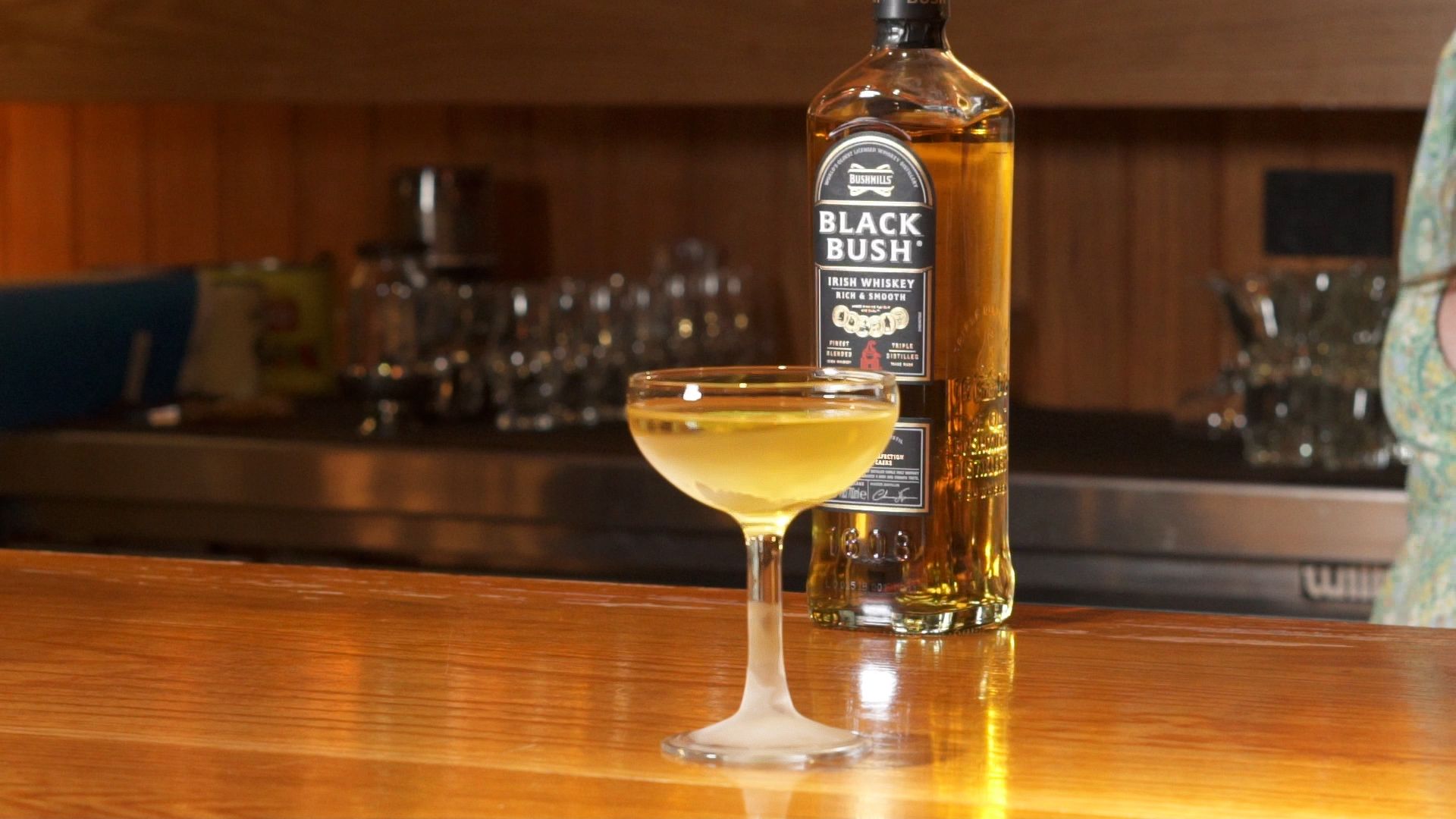
Whiskey Stinger cocktail
Ingredients
- 50ml Black Bush Irish Whiskey
- 20ml quality creme de menthe
Instructions
- Stir all ingredients with ice for about one minute.
- Strain into a chilled coupe glass.
- Garnish with a mint leaf.
Bushmills Black Bush is made with a high component of malt whiskey in the blend, and because they use predominantly ex-oloroso sherry casks for maturation, it means that Black Bush has a rich, malty character, with fruity sherries notes and a smooth finish.
